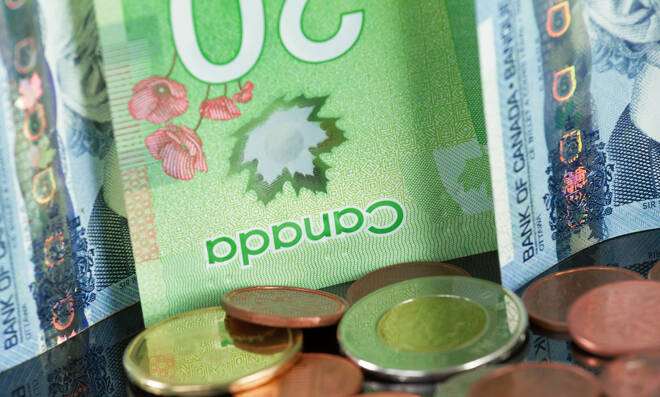Advertisement
Advertisement
USD/CAD: Loonie Gains as U.S. Dollar Retreats, Downside Risks Remain
By:
The Canadian dollar traded marginally higher against the U.S. counterpart as the greenback weakened after July inflation increased at a more moderate pace.
In this article:
The Canadian dollar traded marginally higher against the U.S. counterpart as the greenback weakened after July inflation increased at a more moderate pace.
Today, the dollar to loonie conversion fell to 1.2485, down from Tuesday’s close of 1.2519. The Canadian dollar had lost about 1% in July – the second biggest monthly drop since September 2020 and has weakened about 0.3% so far this month.
“The greenback continues to be guided by market-perceived global economic risks (and associated capital flows), strengthening when they rise but weakening when they fall. And, amid the surging Delta variant, it has been more of the former instead of the latter. It’s currently about 2½% above the pandemic low hit at the beginning of June. However, we judge the greenback will ultimately re-weaken again, once the market gets over the Delta blues, averaging around 1½% lower by 2021-end and a further 1¼% by 2022-end—once again testing the pandemic low,” noted Michael Gregory, an economist at BMO.
“This should help the loonie change its recent flight path. It has been weakening in the wake of U.S. dollar strength, dropping under US$0.785 (above C$1.274) mid-last month, from highs above $0.830 (below C$1.205) at the start of June. A relatively more hawkish Bank of Canada (vs. the Fed) should help as well. We see the Canadian dollar eventually appreciating to around US$0.816 (C$1.225) by the end of this year and US$0.833 (C$1.200) by the end of next year.”
The dollar index, a measurement of the dollar’s value relative to six foreign currencies, was trading 0.13% lower at 92.932 – not far from this year’s high of 93.437. The U.S. dollar weakened versus the basket of currencies after inflation increased at a slower pace in July. Inflation rose 0.5% last month after increasing 0.9% in June.
The risk that the world’s dominant reserve currency, the USD, recovery over the coming year is high, largely driven by the Fed’s expectation of two rate hikes in 2023. A strengthening dollar and growing risk that the Federal Reserve would tighten its monetary policy earlier than expected would push the USD to CAD pair higher.
Canada is the world’s fourth-largest exporter of oil, which edged lower on modest inventory draw. U.S. West Texas Intermediate (WTI) crude futures were trading 0.75% higher at $67.76 a barrel. Lower oil prices lead to lower U.S. dollar earnings for Canadian exporters, resulting in a decreased value of the loonie.
About the Author
Vivek Kumarauthor
Vivek has over five years of experience in working for the financial market as a strategist and economist.
Did you find this article useful?
Latest news and analysis
Advertisement
